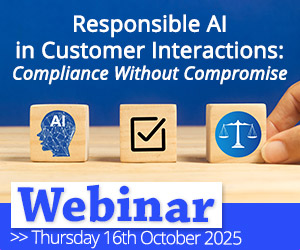Pandemic lockdowns forced many companies to quickly switch their customer service teams to work remotely, with very little advanced warning.
While most organisations managed the transition and were able to stay operational, many only achieved this through workarounds such as cutting their hours of service, reducing the number of different contact channels, and increasing their SLAs.
Now, as we move forward, organisations will have to support remote working for large numbers of staff over the longer term. Those initial systems and processes hastily put in to deal with the immediate crisis will need to be replaced or updated with more robust capabilities. This is driven by three factors:
- Consumers require greater reassurance from the companies they deal with – and are now much less likely to be forgiving of poor or slow service.
- Contact centres need to safeguard staff wellbeing as well as help them to stay productive by giving them the right technology to do their jobs, without adding to their stress levels.
- Businesses must be able to track end-to-end customer service performance, monitor productivity and act quickly to address any issues.
Essentially, we have now moved to a situation of ‘business as usual’ in terms of targets but with substantial parts of the workforce working remotely. How can companies deliver?
Here are four important areas to focus on:
1. Embrace Innovation Through the Cloud & AI
Cloud-based contact centre technology was critical to enabling companies to quickly roll out remote working at the start of the crisis. But many cloud solutions don’t offer the same depth of functionality as on-premise versions and may not deliver the customer experience you require long term.
For example, does your cloud solution meet the specific needs of remote workers, enabling real-time collaboration through platforms such as Microsoft Teams?
Similarly, are the cloud systems you have deployed simple to use by agents and managers, without needing significant retraining and do they integrate with other solutions to deliver full-functionality?
Innovations such as AI can also help your agents deliver more. For example, when customer contact volumes are high, AI-powered chatbots can be deployed to answer more basic queries, enabling employees to focus on higher-value interactions that better use their skills.
2. Effectively Manage Service Quality
Consumers rightly expect the same high-quality service, wherever agents are based, so it’s essential that you’re able to monitor every interaction, across every channel, against key SLAs – and to do this in real-time.
Your technology needs to go beyond basic reporting to measure the metrics that matter to your business.
For example, you should be able to measure performance against your organisation’ specific business KPIs (such as abandoned calls, hold times, or CSAT and NPS) and to record and monitor calls in the same way as in your contact centre with the information quickly available to supervisors.
3. Optimise Agent Performance and Wellbeing
Switching to remote working was a huge change for many agents which came on top of the anxiety of the overall pandemic itself.
As we move to a more permanent adoption of remote working and renewed worries about health, businesses need to work even harder to ensure agents have everything they need to maintain their wellbeing and optimise performance.
Technology and processes must support an effective working from home environment that uses tools, such as video collaboration, to ensure everyone feels connected and engaged.
At the same time, managers and supervisors need access to high-quality, real-time performance information to remotely onboard, support and develop agents and their skills.
Many tools, such as real-time speech analytics, can be used to help here, regardless of whether agents are based at home or in a contact centre.
4. Ensure security and compliance
One of the key concerns about remote working has revolved around compliance and protecting confidential customer information. Which is why in a pre-pandemic survey by Contact Babel a third of contact centre managers identified security and fraud worries as the greatest hurdle to remote working.
Thankfully, technology and clear processes can mitigate these risks. Companies need to remind staff that the same legal regulations and levels of monitoring apply, and the same rules must be adhered to.
At the same time, it’s important to mandate additional rules to protect the privacy of both customers and the agents themselves, such as requiring that calls cannot be overheard and that cameras should be off when talking to customers.
Cloud-based call recording solutions can deliver the same evidence-based audit trail as within the contact centre, delivering reassurance to both businesses and customers.
As we move forward, contact centres face the twin challenge of providing high levels of service while most of their agents work from home.
Author: Guest Author
Published On: 20th Oct 2020 - Last modified: 20th Jan 2023
Read more about - Archived Content, Enghouse Interactive



































